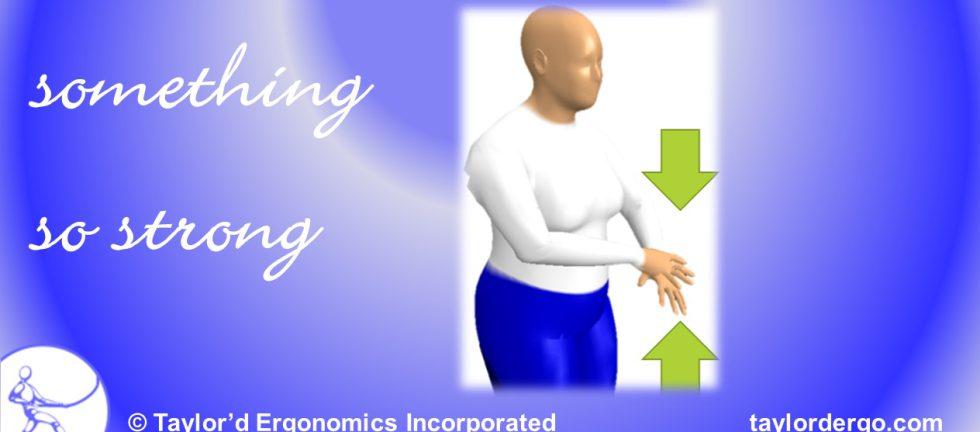By Kendra Squire, Ergo Intern
Many of you have participated in a workplace stretching program. Typically, a stretching program involves 5-10 minutes of warming up and stretching at the beginning of every shift. But what if I told you that stretching might not be the best approach to injury prevention? Research on the prevention of Musculoskeletal Disorders (MSDs) in the workplace supports the use of a strength routine, more than a stretching routine.
Why is this?
Stretching increases the flexibility and range of motion of the joints, while strength training builds the strength, endurance, and muscle size. Both exercises are beneficial, but they result in different changes to the musculoskeletal system.
Let’s look at why a worker might get injured in the workplace; usually MSDs occur because the demands of the job exceed the worker’s physical capabilities. To mitigate these risks, the demands of the job can be reduced (i.e. we can apply ergonomics), the physical capabilities of the worker can be improved (i.e. we can apply kinesiology), or we can use combination of both interventions to prevent further injuries from occurring. As ergonomists, we aim to fit the job to the worker, but we concede that this isn’t always possible, at least not immediately. Strength training can play a role in helping workers prepare for the demands of their jobs, thereby reducing the risk of developing MSDs.
When ergonomists do risk assessments, we are essentially comparing the demands of the job (how much weight has to be handled, effort has to be pushed or pulled, how many times the wrist has to bend) with the strength (or capabilities) of the workers. If the demands are greater than the workers’ tolerance for that task, we need an intervention. There are two ways to tip the balance in the worker’s favour: make the job easier, or make the worker stronger.
This all makes sense theoretically, but what does the research say?
A systematic review of over 50 research studies published in 2016, found strong evidence that workplace resistance training programs can help to prevent and manage upper-extremity MSDs. (Not hard to remember: strong evidence for strength training.) Amongst computer users, moderate evidence was found that stretching programs, paired with vibration feedback on a mouse, can help prevent and manage upper extremity MSDs and symptoms. (Read more about this research here: https://www.iwh.on.ca/projects/effective-workplace-interventions-to-prevent-upper-extremity-disorders-systematic-review-update)
These findings show that strength training may be better than stretching for MSD prevention. Health and safety professionals should consider transforming existing stretching programs into strength training programs.
Strength training programs should directly correspond to the nature of the work that is being done. Ergonomists can collect data about the demands of a job and select appropriate strength training exercises that would help workers in a given department or work group. We can develop an appropriate exercise routine that can be performed while standing up, without weights or props. We don’t need you to buy a class set of dumbells, or set up a gym. With some creativity, we can find ways to challenge the muscles without any special equipment, without compromising positions, and without laying on the floor. And since we’re ergonomists (concerned with preventing MSDs), we’ll also be careful to avoid activities that might cause a strain/sprain!
So, should I still stretch?
Stretching won’t increase your chances of getting MSD (if performed properly), but it might not reduce it either. If you want to reduce the risks of MSDs at work, replace your pre-work stretching with strength-building. Stretching after work might reduce muscle tension and tightness.
Need some help?
If you’d like our ergonomists to help you to select appropriate strength exercises, and to create visual aids and train-the-trainer content, get in touch with us. We’ve been working with a couple of our clients on these initiatives, and our pre- and post-program survey results are promising!


